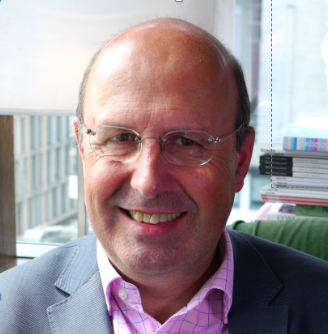You can sign up to our LinkedIn newsletter here
One of the great advantages of a Portfolio Executive working is that once you’ve got a mature portfolio of 4-6 clients who are staying with you for 4-6 years, then the number of new clients you need to find per year goes down to about 1.
But if you wait until you lose a client before you try to find a new client, you are at risk that overtime your portfolio will degrade. It is important to continually manage a pipeline of opportunities for new clients.
The Importance of Nurturing your Network
If you are not out in the marketplace, making connections, networking and being visible, then your network will die and when you need those connections, they will take a lot of effort to revive.
I had a very painful experience when I worked pretty much full-time on what I thought was going to be a permanent role, but which turned out to be an interim assignment. Over a period of less than 6 months my activity and engagement with my network slowed right down. When the role came to sudden and unexpected end, it took me almost 9 months to rebuild my network and start to win regular assignments. You do need to be out there on a regular basis, activating your network, engaging with potential clients and keeping yourself visible.
Maintaining Market Awareness
Nurturing your network has an important added benefit. You are much more aware of what is going on in the market: you are much more aware of the new things that are happening for your client group. As a result, you may want to modify the positioning of your offer as your client needs evolve. You may also find new opportunities for work that you can really enjoy and that keep you learning and growing.
This is not just about making sure you can get the next job; this is also about making sure you are fully connected with the marketplace you are serving.
Networking with other Portfolio Executives
One of the things you should be doing with your networking is regularly talking to other Portfolio Executives. If you join the Portfolio Executive community at https://portfolioexecutive.biz then there is great opportunity for you to meet with like-minded people and regularly talk through the kind of opportunities that they are finding. For example, if you are a Finance Director you may find it really helpful to talk to one of the Sales Directors and understand how they see client needs in relation to finance.
Building a pipeline of opportunities is essential. But how should you go about it?
Well, I’m finding that there are really three styles with which people engage with opportunities.
1 – Active Outbound LinkedIn Marketing.
This doesn’t have to be a huge burden and you can get support to do it. It is a great way of telling your story to marketplace, building your profile, having a distinctive point of view and creating connections that will continually enrich and enhance your life and network.
My wife gave me a challenge in the last week when she said,
“Charles, if you were starting a business today at 60, that would serve you into your 80’s what would you do differently?”
The clients that I want when I am 80 are going to be 30 or 40 today, even a bit younger. I need to see how I can start to engage with people in that age range now, so that I am building relationships, connecting with their needs and they are aware of me when they become ready for my offering in 10-15 years’ time.
2 – Actively Engaging with your Existing Network
This can be very powerful. It is not just about ringing people up and have a coffee. Although that is useful. More important is that you become known as someone who is helpful to others. You also need to ask advice from and offering suggestion to members of your network. You need to notice what they’re doing and keeping in touch with them as their circumstance change.
When I was at Andersen, the managing partner of the firm in the UK, used to commit to having a face-to-face lunch every single week with members of his network. He would also organise a call every single week with somebody else in his network. He was regularly nurturing him personal network. He wouldn’t have something specific that he wanted to sell them at that time. He just wanted to continue to be front of mind for these people. With 50 lunch appointments a year, he had a core network that might evolve over time. Crucially, he could engage a broad range of well-connected people. They were his eyes and ears in the marketplace. They also got to understand what he was doing and what he had to share with them.
3 – Join a group where you can build deep, long-standing relationships.
Your choice of group may evolve over time but you are intentional about remaining deeply connected. I joined the Sandler sales training community and continue to nurture relationships from my time there. Others have joined something like Toastmasters. I have colleagues who have taken significant responsibilities in their professional institution or trade association. Alternatively, a small portfolio of trustee roles can provide a rich and diverse network. If, for example, you are a trustee of 4 or 5 charities and you have a trustee meeting once a quarter with perhaps 10 other trustees in each charity, you are how part of a community of 40 – 50 senior experienced people. that they have a kinship with. I became a Visiting Professor at University College London which gave me access to a very interesting range of people. My advice is to find a community where you will find like-minded people and nurture new deep relationships which can connect you with exciting opportunities.
Conclusion
Even with a mature portfolio of 4-6 clients, you do need to continue to build a pipeline of opportunities. Find a style of interaction that works for you to access new opportunities and actively manage and measure your pipeline. Then you are not going to be surprised if, over a couple of months, you lose two important clients. You won’t be left scrabbling around to restore your income to the levels you have enjoyed.

Charles McLachlan is the founder of FuturePerfect and on a mission to transform the future of work and business. The Portfolio Executive programme is a new initiative to help executives build a sustainable and impactful second-half-career. Creating an alternative future takes imagination, design, organisation and many other thinking skills. Charles is happy to lend them to you.
